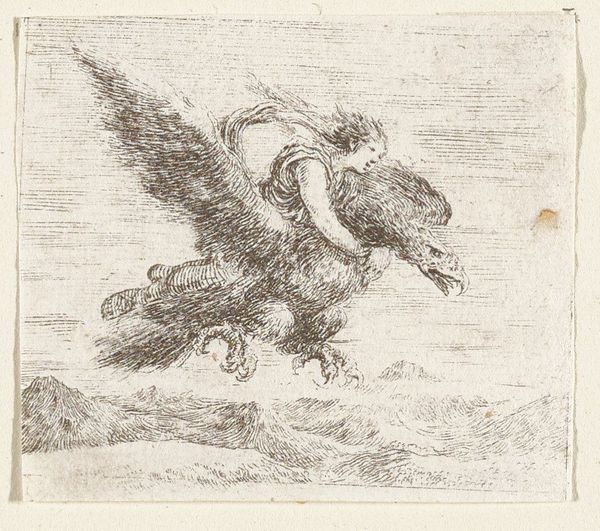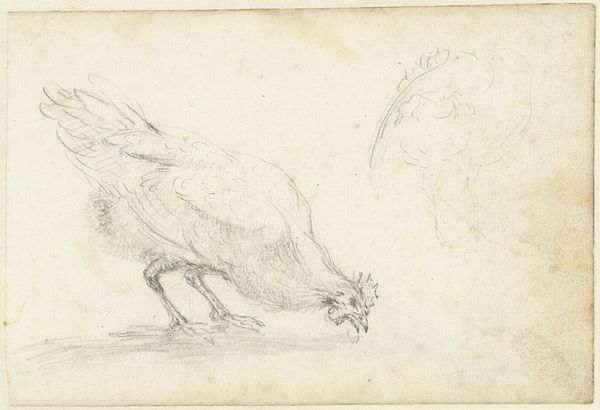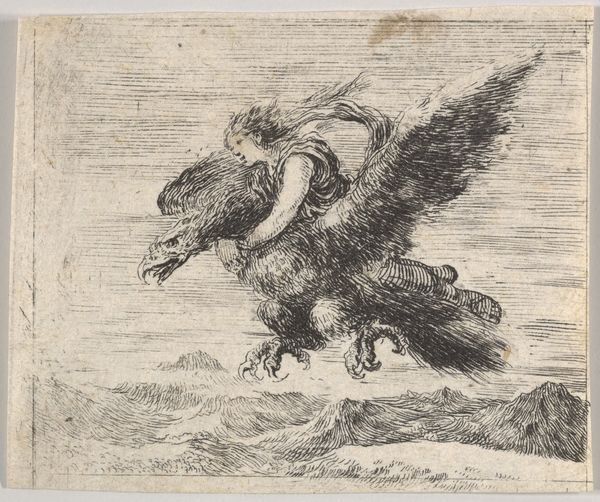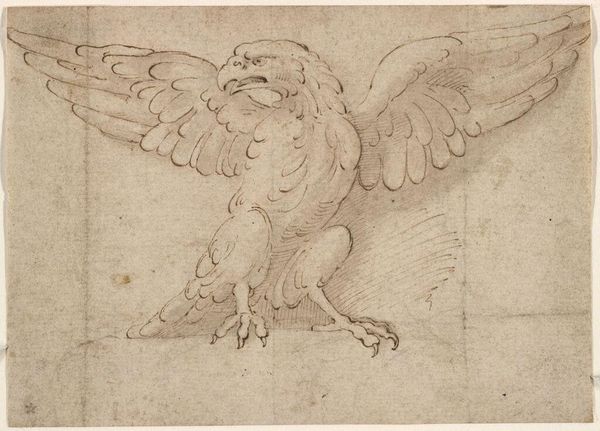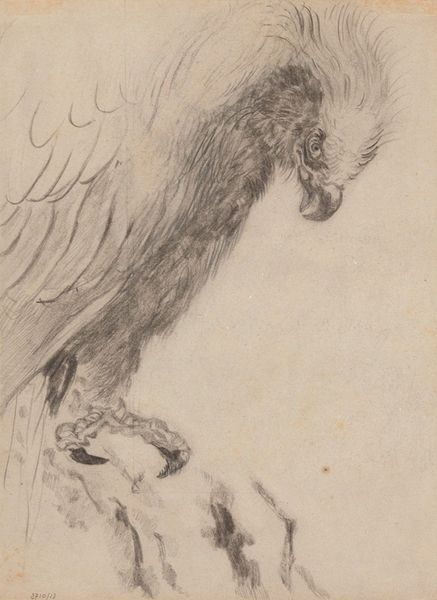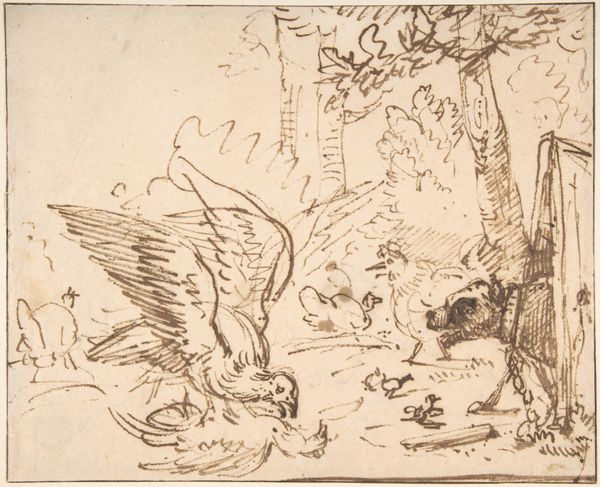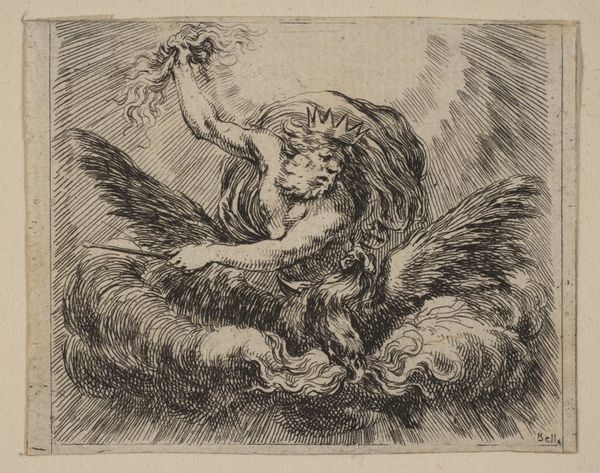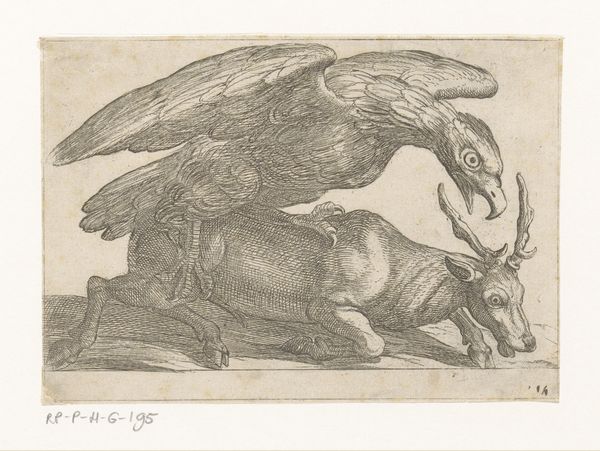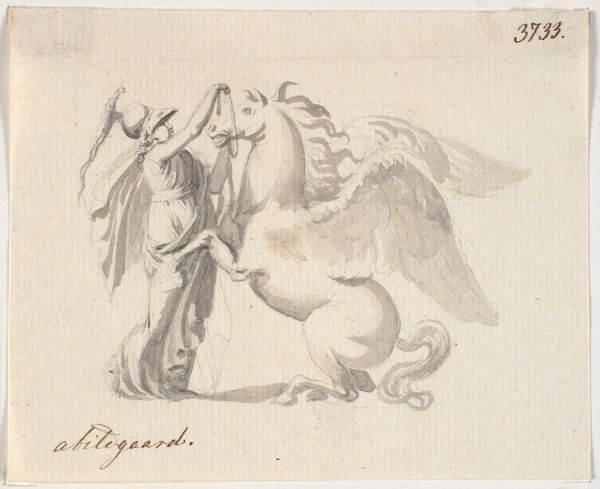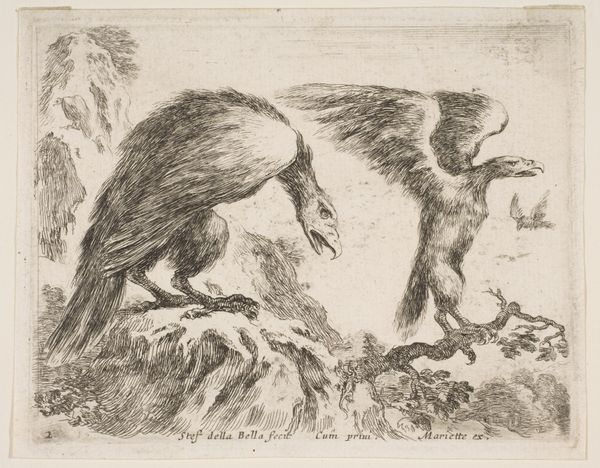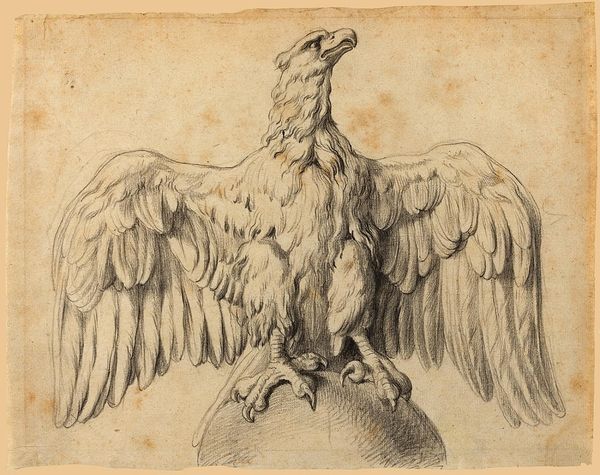
drawing, print, pencil
#
drawing
#
allegory
#
baroque
# print
#
landscape
#
figuration
#
pencil
Dimensions: sheet: 3 11/16 x 5 3/8 in. (9.4 x 13.7 cm)
Copyright: Public Domain
Editor: Here we have Sophia Blesendorf's "The Rape of Ganymede" from 1694, a drawing in pencil. It’s a delicate reddish hue, showing the mythological scene of Ganymede being carried away by Zeus as an eagle. The landscape seems to fade into the background almost dreamlike. What do you see in this piece, beyond the obvious narrative? Curator: Beyond the immediate representation of a classical myth, I’m struck by Blesendorf's choice of materials and technique. Why render such a dramatic subject—'the rape,' or abduction, of Ganymede—in a medium as seemingly fragile as pencil on paper? What does that say about how she, and perhaps her contemporaries, viewed the power dynamics inherent in such narratives? Was it a commentary of the laborious nature of depicting mythical figures, referencing old masters while utilizing relatively accessible media? Editor: That’s a compelling point about the fragility. It’s not oil paint and canvas; it's a print. Was this intended for mass production, therefore domestic display rather than grand gallery? Curator: Exactly. Prints were much more accessible objects. Looking at it this way reframes the work; not just as a display of artistic skill, but as a commodity for a growing art market. Blesendorf's choice might be about reaching a broader audience, challenging notions of "high art" confined to the elite. Do you see her engaging with consumer culture in some way? Editor: Yes, I do. Thinking about it now, using an allegorical scene, reproduced en masse makes me wonder if there’s any societal criticism about production values that can be inferred. Curator: Precisely! The scale of production and dissemination impacts how it's understood. Is it then about a material engagement or accessibility? What has caught your eye, in this production of material, after this conversation? Editor: It highlights that Blesendorf wasn’t just passively retelling a myth, but was actively participating in—and perhaps commenting on—the material conditions of art making and consumption of the era. Curator: Indeed. It forces us to look beyond the surface narrative and delve into the social and economic context of its creation, and her place within the field of craft as an artist.
Comments
No comments
Be the first to comment and join the conversation on the ultimate creative platform.
